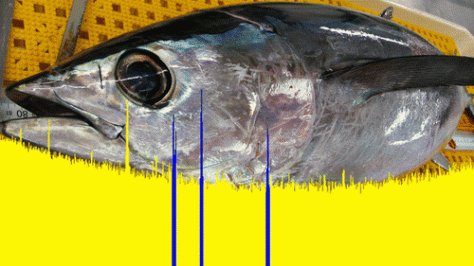
The purpose of this post is to report on a recently published, peer-reviewed study that investigated the levels of Fukushima derived contamination in migratory Pacific predators. The post is part of an ongoing effort to inform interested members of the public what the scientific community is finding about the impact of the Fukushima Daiichi Nuclear Power Plant (FDNPP) disaster on the environmental and human health. Madigan and colleagues looked for radiocesium (134Cs, half life ~ 2 years; 137Cs, half life ~30 years) in a variety of large, predatory organisms in the North Pacific Ocean between 2012 and 2015. Their results were as follows:
- Fukushima derived 134Cs could not be detected in any of the organisms with the exception of a single olive ridley sea turtle with trace levels (0.1 Bq kg-1 dry weight)
- Levels of 137Cs varied in the organisms but were generally unchanged compared with levels measured in organisms prior to the FDNPP disaster (pre-2011)
- Levels of 137Cs were roughly 10 to 100-fold lower in the organisms than levels of naturally occurring Potassium-40 (40K)
- Neither the levels of radiocesium or 40K approach levels known to represent a significant health risk to the animal or human consumers
These direct measurements of contamination levels in marine predators suggest that assuming that Pacific organisms will accumulate detectable FDNPP contamination is unwise. Similarly, anxiety and speculation about the dangers of radiocesium bioaccumulation in the face of such data seems unfounded.
Between 2012 and 2015 a total of 91 different organisms from a variety of predatory marine groups were sampled and analyzed for the presence of radiocesium contamination and naturally occurring 40K. The human made isotope 134Cs, with its relatively short ~2 year half life, serves as a fingerprint of FDNPP contamination as all other human sources are sufficiently distant in the past to have completely decayed away in the environment. Organisms sampled and their radioisotope content are reported in the following table:
With the exception of a single olive ridley sea turtle no detectable (<0.1 Bq kg-1 dry weight) trace of FDNPP 134Cs contamination was found. Levels of 137Cs found in the organisms were similar to levels measured pre-Fukushima. In addition, the 137Cs levels were less than 0.2% of US FDA levels of concern (370 Bq kg-1 wet weight) and less than 0.05% of US FDA derived intervention levels (1200 Bq kg-1 wet weight). Simply stated levels in these organisms would have to be >1600-fold higher to be designated unfit for market. The levels and ionizing radiation dose to consumers from naturally occurring 40K dwarfed those from FDNPP radiocesium. Radiocesium derived ionizing radiation doses were <1% of those from 40K. Neither the doses from 40K or cesium isotopes approached, even remotely, those known to affect the health of the organisms or consumers of these organisms.
These results are consistent with those of the Integrated Fukushima Ocean Radionuclide Monitoring (InFORM) project. Ongoing, scientifically rigorous, monitoring of the marine environment provides the best evidence with which to gauge the risk that the FDNPP meltdowns represent for marine and public health here in North America.




